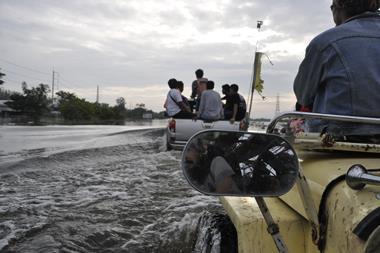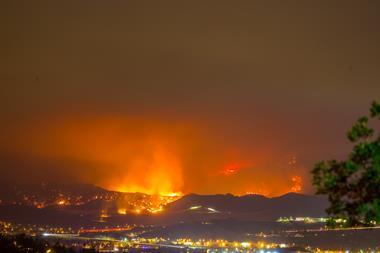Annual flood damage costs in the UK could rise to £12bn by 2080 but climate change also presents opportunities for business, says Defra

Annual flood damage to buildings and property in the UK could rise as high as £12bn before the end of the Century, according to a major new climate change risk assessment (CCRA) released by the UK government this week (January 26).
In addition, London could experience between 27 and 121 days every year where the temperature rises above 26 degrees Celsius by the 2080s, compared with 18 days at present.
The risk assessment highlighted the top 100 challenges to the UK economy of a changing climate and also stressed the need for increased resiliency in the business community.
Conducted by the Department for Environment, Food and Rural Affairs (Defra) it identified the main climate challenges to businesses as flooding and coastal erosion, increased competition for water, and disruption of transport and communication links.
But climate change will also present opportunities, according to the CCRA. For example, melting of Arctic sea ice could lead to the opening up of new container shipping routes. And wheat yields could increase by as much as 140% by the 2050s, according to the report.
At the same time the UK government announced a National Adaptation Programme designed to prepare the UK for the effects of climate change, including the risks set out in the CCRA.
Environment Secretary Caroline Spelman urged UK companies to develop innovative products and services tailored to meet the global climate challenges. “Climate change is a global phenomenon, but its impacts will be felt at a local level and affect people differently depending on where they live,” she said.
Lord John Krebs, Chair of the Adaptation Sub-Committee of the Committee on Climate Change, added: “Without an effective plan to prepare for the risks from climate change the country may sleepwalk into disaster.”
Among the key risks identified by the CCRA are:
- Hotter summers, presenting significant health risks. There could be between 580 and 5,900 additional premature deaths per year by the 2050s
- Increasing pressure on the UK’s water resources. There could be major supply shortages by the 2050s in parts of the north, south and east of England with the greatest challenge in the Thames River basin
- The risks of flooding are projected to increase significantly across the UK. Bthe 2080s due the effects of climate change and population growth annual damages to buildings and property could reach between £2.1bn and £12bn, compared to current costs of £1.2bn
- The number of days in an average year when temperatures rise above 26 degrees Celsius is projected to rise from 18 days to between 27 and 121 days in London by the 2080s. This could mean greater demand for energy to cool buildings and more heat related illnesses
- Increases in drought and some pest and diseases could reduce timber yields and quality. Projected drought conditions could mean a drop in timber yields of between 10% and 25% by the 2080s in the south east, driving up timber costs. Pests and diseases, which thrive in warmer conditions, may also pose an increasing threat, such as red band needle blight - which causes loss of foliage and can lead to tree death.
The CCRA also highlighted some opportunities as a result of climate change, including:
- Opening of Arctic shipping routes. The melting of Arctic sea ice could lead to the opening up of new container shipping routes and improved trade links with Asia and the Pacific
- Milder winters may result in a major reduction in cold-related deaths and illnesses. Currently, cold weather results in between 26,000 and 57,000 premature deaths each year in the UK. By the 2050s, a reduction in these figures of between 3,900 and 24,000 is projected to occur due to increasing average winter temperatures
- Opportunities to improve sustainable food production. Sugar beet yields are projected to increase by 20-70% and wheat yields by 40-140% by the 2050s due to longer growing seasons if water and nutrients remain available. A warmer climate presents opportunities to grow new crops such as soya, sunflowers, peaches, apricots and grapes, while new markets may open up overseas for British grown produce.
Questions Defra thinks you should be asking:
1. Do you feel that your organisation understands how future climate and weather risks may (or may not) affect its performance? Is this a problem?
2. In your organisation, what do you feel is the most urgent action needed to adapt to climate change risks?
3. If you think that your organisation needs to do more to adapt, what is stopping you? To what extent do you think your organisation/sector can do what is needed without Government intervention?
4. Do you have examples of innovative ways of assessing your resilience or adapting to the current and future climate, would you be happy to share these with your peers?




















No comments yet